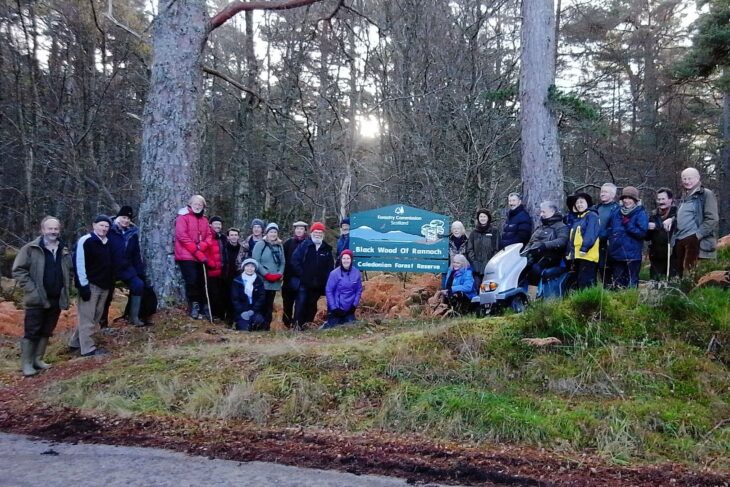Connecting artists and the environment
In this guest blog Lewis Coenen-Rowe, Green Arts Networks, Events, and Programming Officer at Creative Carbon Scotland explains how the charity’s Library of Creative Sustainability demonstrates the benefits of collaboration between environmentalists and artists.
Why is it useful for artists and environmentalists to collaborate? One answer might be that many issues that environmentalists find hardest to solve fall into areas where artists traditionally thrive. It can be difficult to engage a wider audience. It can be hard to gain commitment on a more personal level. New problems can arise that don’t have a clear or systematic solution. Outcomes can be unpredictable. Environmental issues often involve hotly contested disputes that feel unresolvable.
Communication, engagement, creative thinking, unpredictability and contradiction are all areas where artists are used to working. For their part, artists can benefit enormously from working in collaboration with environmental organisations, gaining knowledge, resources, inspiration, and audiences. As a result, an increasing number of projects with sustainability goals are choosing to collaborate with artists, embedding them deeply into planning and decision making. The process of collaboration can be difficult, especially between people coming from wildly different fields, but it creates the potential for new successes that neither party could accomplish on their own.
The Library of Creative Sustainability is a freely accessible online resource that brings together case studies of some of the most successful projects of this kind, giving detailed descriptions as well as tips and advice for anyone considering embarking on similar work. Here are two examples drawn from the Library that engage differently with the issue of biodiversity.

The Black Wood of Rannoch
The Black Wood of Rannoch is one of the largest and best-preserved ancient woodlands in Scotland and is of high importance for local biodiversity. It is also widely agreed that long-term environmental sustainability requires rebuilding a sense of our relationship with the natural world, which may require spending more time in natural sites like the Black Wood of Rannoch. The site thus faces a debate over whether more people should be encouraged to come to visit this special place or whether they should be discouraged for fear of damaging its unique ecosystem.
Forest Research worked with artists Timothy Collins and Reiko Goto to interrogate this seemingly unsolvable dilemma. The artists saw the conflict as a positive opportunity to develop our understanding of how these issues of preserving biodiversity and rebuilding a cultural relationship with our forests connect to each other.
They brought together residents, artists, researchers, and foresters to debate the issues in a non-judgemental space and worked closely with members of the community to understand their perspectives.
The artists sought to connect the area’s social history with the history of the forest through various means, including the creation of a map featuring the Gaelic names for locations in the forest, created in dialogue with local residents to build up an understanding of the historical reasons for these names, which invariably revealed how intertwined the lives of humans and the forest had been. Artworks like these were then exhibited around the country, raising the profile of this important forest without necessarily requiring people to visit in person.

Milkweed Dispersal Balloons
The Natural Resource Defense Council in the United States was the first large-scale environmental organisation to have a resident artist working alongside other members of staff. The artist-in-residence, Jenny Kendler, helped shape the projects that the NRDC undertook and found novel ways of achieving the organisation’s goals.
One of these involved finding a creative way of enlisting members of the public to help protect endangered monarch butterflies. Kendler’s Milkweed Dispersal Balloons project involved setting up a ‘food cart’ at various museums and galleries, stocked with balloons filled with seeds for milkweed, the main source of food for monarch butterflies.
The setup was framed as a work of public art, which meant that gallery visitors tended to approach Kendler directly, who would engage them in a discussion about how to protect monarch butterflies and present them with a balloon and a pin-badge. Visitors could then burst their balloon in an appropriate environment to spread the seeds.
Kendler’s inviting, picture-friendly setup attracted substantial attention. As of September 2019 the Milkweed project had distributed thousands of balloons, filled with hundreds of thousands of milkweed seeds and had been presented at more than ten museums, parks and cultural venues by Kendler herself – with many more presentations by members of the public who were invited to recreate this ‘open-source’ project, using resources made available by Kendler via her website.
Lewis Coenen-Rowe, Creative Carbon Scotland
The Library of Creative Sustainability is an initiative from Creative Carbon Scotland, a charity working on the role of arts and culture in achieving Scotland’s essential transformational change for a sustainable future. Our Culture/SHIFT programme is all about facilitating the kind of work detailed in the Library. If this article has piqued your interest, please get in touch.
Help protect Scotland’s wildlife
Our work to save Scotland’s wildlife is made possible thanks to the generosity of our members and supporters.
Join today from just £3 a month to help protect the species you love.
Preface
In this guest blog Lewis Coenen-Rowe, Green Arts Networks, Events, and Programming Officer at Creative Carbon Scotland explains how the charity’s Library of Creative Sustainability demonstrates the benefits of collaboration …
